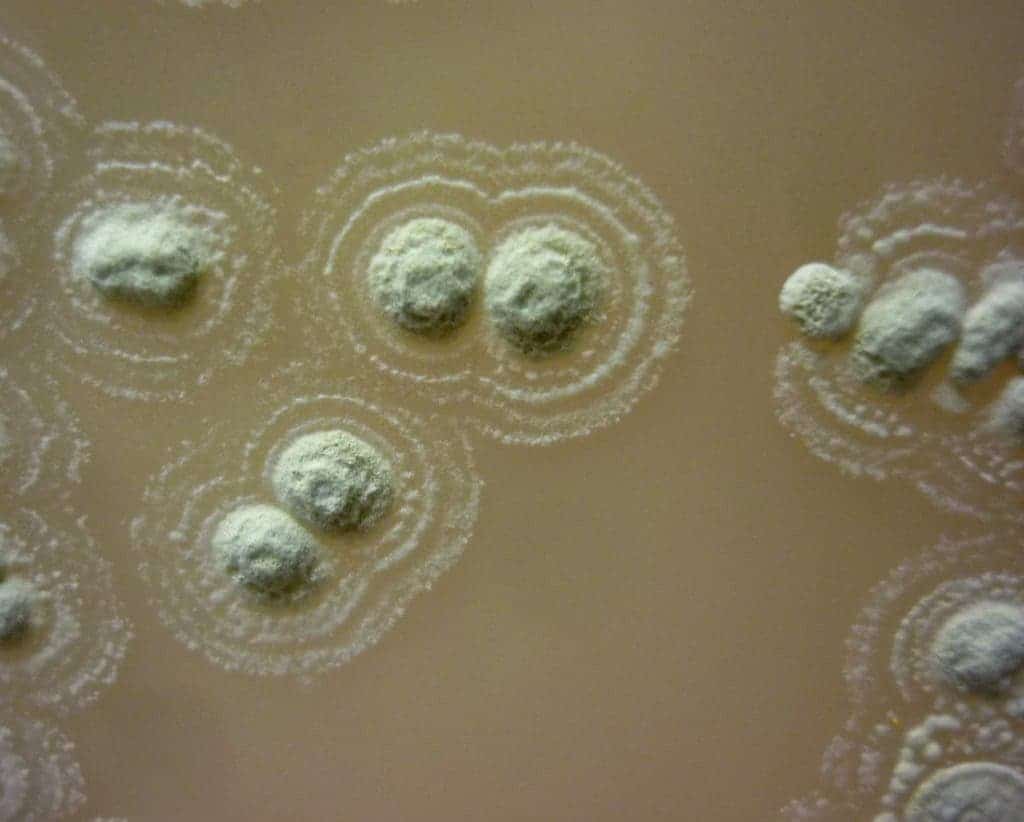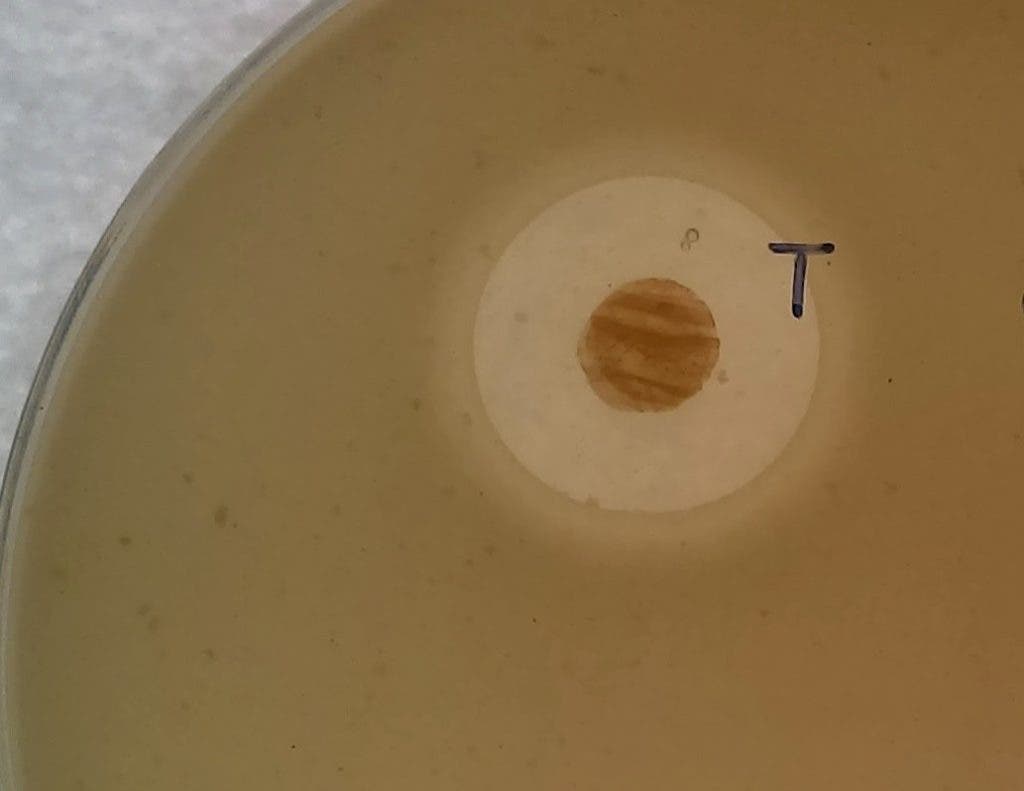Irish soil might win us the fight against drug-resistant superbugs. Literally!

Growth of the newly discovered Streptomyces sp. myrophorea. Although superficially resembling fungi, Streptomyces are true bacteria and are the source of two-thirds of the various frontline antibiotics used in medicine.
Image credits G Quinn / Swansea University
An international team of researchers based at the Swansea University Medical School, UK, reports finding a new strain of bacteria that can murder pathogens that our antibiotics increasingly cannot. The bacteria has been found in soil samples recovered from an area of Fermanagh, Northern Ireland.
Bad bugs get grounded
“This new strain of bacteria is effective against 4 of the top 6 pathogens that are resistant to antibiotics, including MRSA. Our discovery is an important step forward in the fight against antibiotic resistance,” says Professor Paul Dyson of Swansea University Medical School, paper co-author.
The finding is far from inconsequential. The World Health Organisation (WHO) describes rising antibiotic resistance as “one of the biggest threats to global health, food security, and development today”. Further research also estimated that antibiotic-resistant ‘superbugs’ could lead up to 1.3 million deaths in Europe alone by 2050.
The team named their discovery Streptomyces sp. myrophorea. It was discovered in the Boho Highlands, County Fermanagh, Northern Ireland, hiding in the soil. The researchers investigated the soils there as Dr. Gerry Quinn, a previous resident of the area, became curious to investigate local healing traditions.
Those traditions called for a small amount of soil to be wrapped up in cotton cloth and applied to cure ailments varying from toothaches to throat or neck infections. The team notes that the area has been inhabited for at least 4,000 years — first by Neolithic tribes and later druidic tribes — who may have started this tradition.
Lab tests later revealed the presence of the strain in local soils, and clued the team in on their impressive antibacterial properties. This bacteria inhibited the growth of four of the top six multi-resistant pathogens (those listed by the WHO as being responsible for healthcare-associated infections): Vancomycin-resistant Enterococcus faecium (VRE), methicillin-resistant Staphylococcus aureus (MRSA), Klebsiella pneumonia, and Carbenepenem-resistant Acinetobacter baumanii. It was also successful in inhibiting both gram positive and gram negative bacteria, which differ in the structure of their cell wall. Gram-negative bacteria are, generally speaking, more resistant to antibiotics.
It is not yet clear exactly how the bacteria do this, but the team is hard at work finding out.

Zone of inhibition (light brown) produced by Streptomyces sp myrophorea (brown spot) on a lawn of MRSA.
Image credits G Quinn / Swansea University.
The active compounds secreted by Streptomyces sp.myrophorea could help create a new class of treatment against multi-drug resistant bacteria, the study reports. These pathogens are one of the most pressing threats to public health currently, as doctors are often left powerless to treat them. They’re especially dangerous in hospitals, where the large density of patients (often with weakened or compromised immune systems) means easy pickings for such pathogens.
“Our results show that folklore and traditional medicines are worth investigating in the search for new antibiotics,” Professor Dyson says. “Scientists, historians, and archaeologists can all have something to contribute to this task. It seems that part of the answer to this very modern problem might lie in the wisdom of the past.”
“We will now concentrate on the purification and identification of these antibiotics. We have also discovered additional antibacterial organisms from the same soil cure which may cover a broader spectrum of multi-resistant pathogens.”
The paper “A Novel Alkaliphilic Streptomyces Inhibits ESKAPE Pathogens” has been published in the journal Frontiers in Microbiology.









